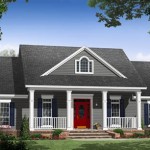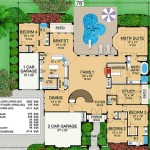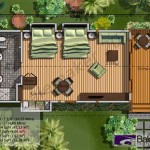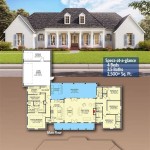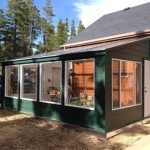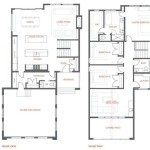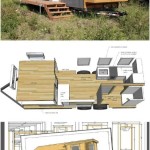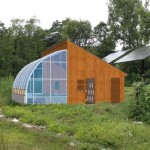Small Modern Lake House Plans: A Guide to Efficient and Stylish Living
The allure of lakefront living is undeniable. The tranquil waters, the serene landscapes, and the promise of recreational opportunities draw many to seek a home nestled near a lake. However, the desire for a lake house doesn't necessarily necessitate a sprawling mansion. Small modern lake house plans offer a compelling alternative, allowing individuals and families to embrace the lake lifestyle without sacrificing efficiency, style, or financial prudence. Designing and implementing a small modern lake house plan requires careful consideration of various factors, from site orientation and layout to material selection and interior design. This article delves into the key aspects of small modern lake house plans, providing a comprehensive guide to creating a functional and aesthetically pleasing lakeside retreat.
Prioritizing Space Efficiency: Optimizing Every Square Foot
The cornerstone of any successful small modern lake house plan is space efficiency. With a limited footprint, every square foot must be thoughtfully designed and utilized to its maximum potential. This requires a shift in mindset, moving away from the idea of expansive, underutilized spaces towards a focus on multi-functional areas and clever storage solutions.
Open-concept living is a popular and effective strategy for maximizing space in small lake houses. Combining the living room, dining area, and kitchen into a single, unified space creates a sense of openness and allows for greater flexibility in furniture arrangement and usage. Strategic placement of windows and doors further enhances the feeling of spaciousness by bringing in natural light and blurring the lines between the interior and exterior.
Built-in storage solutions are essential for keeping clutter at bay and maintaining a clean and organized living environment. Wall-mounted cabinets, shelving units, and under-bed storage compartments can provide ample space for storing belongings without sacrificing valuable floor space. Consider incorporating built-in seating with integrated storage beneath, providing both a comfortable place to relax and a practical storage solution for blankets, pillows, or other items.
Multi-functional furniture is another key element in space-efficient design. Sofa beds, folding dining tables, and convertible coffee tables can adapt to different needs, allowing a single piece of furniture to serve multiple purposes. Selecting furniture with a smaller footprint is also crucial. Opt for streamlined designs and avoid bulky, oversized pieces that can overwhelm a small space.
Vertical space is often overlooked but offers significant potential for storage and design. Tall, narrow bookshelves, floor-to-ceiling cabinets, and lofted sleeping areas can effectively utilize vertical space, freeing up valuable floor area. Creative use of wall space, such as installing floating shelves or hanging artwork, can also contribute to a more visually appealing and functional space.
Embracing Modern Design Principles: Style and Functionality
The "modern" aspect of small modern lake house plans encompasses a range of design principles that emphasize clean lines, minimalist aesthetics, and functional layouts. Modern design prioritizes simplicity, efficiency, and a connection to the surrounding environment.
Clean lines and geometric shapes are hallmarks of modern architecture. Avoid ornate details and excessive ornamentation, opting instead for simple, unadorned surfaces and a focus on the inherent beauty of materials. Flat or slightly pitched roofs are common in modern lake house designs, contributing to a sleek and contemporary aesthetic.
A minimalist approach is crucial for maximizing space and creating a sense of calm and tranquility. Decluttering and reducing the amount of unnecessary possessions is essential. Focus on quality over quantity, selecting a few well-chosen pieces of furniture and décor that are both functional and aesthetically pleasing. A neutral color palette, with accents of color introduced through artwork and accessories, can create a calming and serene atmosphere.
Connecting the interior and exterior is a key aspect of modern lake house design. Large windows and sliding glass doors allow for panoramic views of the lake and surrounding landscape, blurring the boundaries between the inside and outside. Decks, patios, and screened porches provide outdoor living spaces that extend the living area and allow residents to enjoy the natural beauty of the lake environment. Consider incorporating natural materials, such as wood and stone, into the design to further enhance the connection to nature.
Sustainable design principles are increasingly important in modern lake house plans. Incorporating energy-efficient windows and doors, using sustainable building materials, and installing solar panels can reduce the environmental impact of the home and lower energy costs. Consider using rainwater harvesting systems for irrigation and employing landscaping techniques that minimize water usage.
Technology plays a significant role in modern lake house design. Smart home systems can automate lighting, heating, and security, enhancing comfort and convenience. High-speed internet access is essential for staying connected, especially for those who plan to use the lake house as a remote work location.
Addressing Site-Specific Considerations: Harmonizing with the Landscape
Designing a lake house requires careful consideration of the specific site conditions. Factors such as topography, soil type, sun exposure, and prevailing winds can all influence the design and construction process. Integrating the lake house seamlessly into the landscape is essential for creating a harmonious and sustainable living environment.
Orientation is a crucial factor in maximizing energy efficiency and minimizing environmental impact. Positioning the lake house to take advantage of natural sunlight can reduce heating and cooling costs. Overhangs and shading devices can help to block direct sunlight during the hottest months of the year, while allowing sunlight to penetrate during the colder months. Consider the prevailing winds and design the house to take advantage of natural ventilation.
Protecting the shoreline is essential for preserving the health and beauty of the lake ecosystem. Minimize disturbance to vegetation and avoid building too close to the water's edge. Implement erosion control measures to prevent soil runoff and pollution. Use native plants in landscaping to provide habitat for wildlife and reduce the need for irrigation.
Consider the views from the lake house and design the layout to maximize these views. Position living areas and bedrooms to take advantage of the most scenic vistas. Decks and patios should be oriented towards the lake, providing ample opportunities for outdoor relaxation and enjoyment. Privacy from neighboring properties is also an important consideration. Use landscaping or architectural features to create a sense of seclusion and privacy.
Accessibility is another important factor, particularly for individuals with mobility limitations. Ensure that the lake house is easily accessible from the driveway or parking area. Consider incorporating ramps or elevators to provide access to different levels of the house. Design bathrooms and kitchens with accessibility in mind, incorporating features such as grab bars and wider doorways.
Compliance with local building codes and regulations is essential. Obtain all necessary permits before starting construction. Be aware of any restrictions on building height, setbacks, or shoreline development. Consult with a qualified architect or builder who is familiar with the specific requirements of the lake area.
Choosing the right materials is crucial for creating a durable and aesthetically pleasing lake house. Consider materials that are resistant to moisture, rot, and insect damage. Natural materials, such as wood and stone, can blend seamlessly with the surrounding landscape. Metal roofing and siding are durable and low-maintenance options. Selecting materials that are locally sourced can reduce transportation costs and support local businesses.
In conclusion, small modern lake house plans offer a compelling opportunity to embrace lakeside living in a stylish and efficient manner. By prioritizing space efficiency, embracing modern design principles, and addressing site-specific considerations, individuals and families can create a functional and aesthetically pleasing retreat that harmonizes with the natural beauty of the lake environment.

Pin By Andre Therrien On Modern Cabin Floor Plan Lake House Plans Style

Open Concept Small Lake House Plans Houseplans Blog Com

Lake House Plans Floor Lakefront The Designers

Modern Lake House Plans Blog Eplans Com

House Plan 2 Bedrooms 1 Bathrooms 3972 Drummond Plans

Lake House Plans Blog Homeplans Com

Modern Lake House Designs Waterfront With Agrarian And Contemporary Design Digsdigs Plans Small Houses

Modern Lake House Plan Forest Cabin 1 Bedroom

Open Concept Small Lake House Plans Houseplans Blog Com

Modern Lake House Plans Blog Eplans Com

